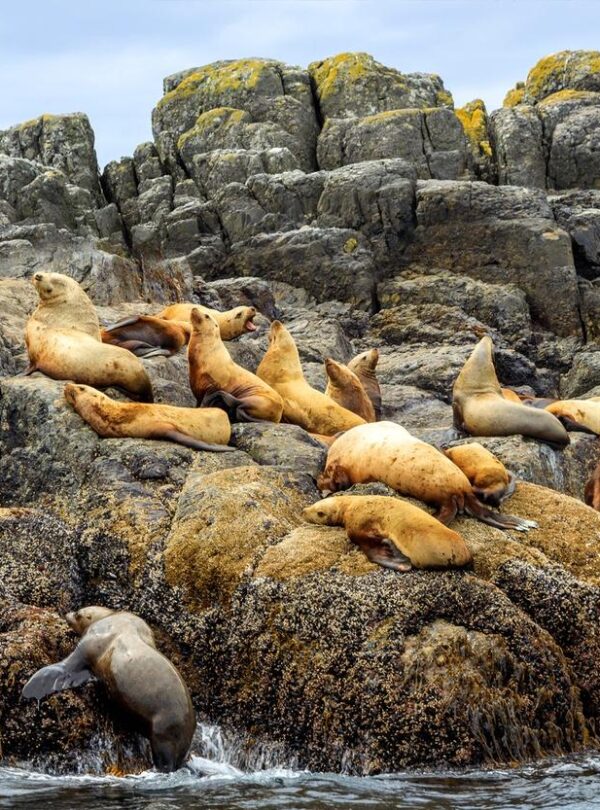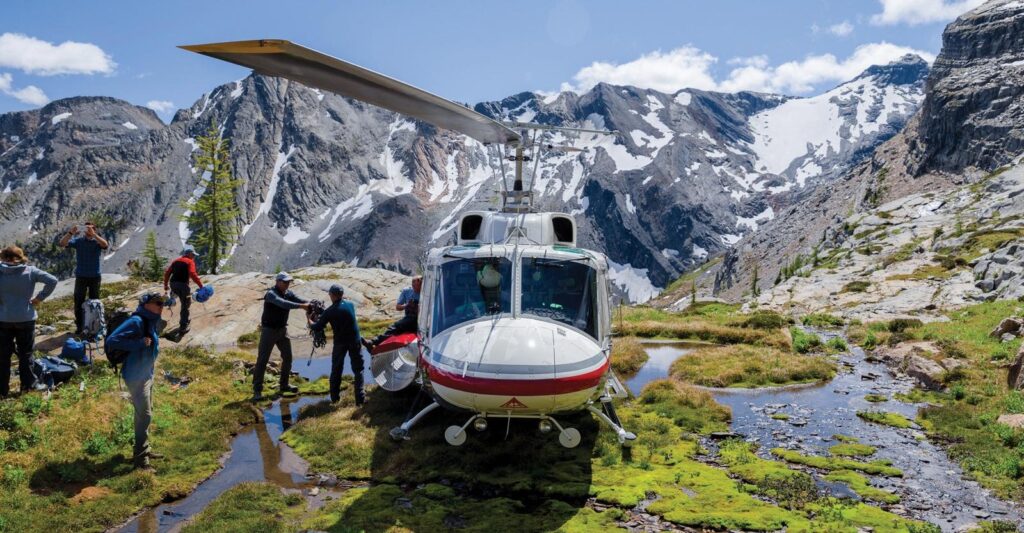Overview
Perched on the outer edge of the continental shelf 60 miles off the northwest coast of Canada lies a place called Haida Gwaii: “Islands of the People” in the language of the ancestral Haida whose presence here spans millennia. Wild and windswept, this archipelago of more than 200 islands is one of the richest biological and cultural sites in North America. Its geographic isolation has allowed numerous unique species to evolve, earning it the name “Canada’s Galapagos.” Encounter the wonder and mystique of Haida Gwaii from a deluxe sailboat as we explore ancient temperate rainforest, a vibrant intertidal zone teeming with colorful sea creatures, and a human heritage that dates back 13,000 years. Wreathed in mist, old-growth cedars, Sitka spruce and western hemlocks pierce the silver underbelly of the clouds. Old totem poles also rise skyward from abandoned Haida villages now sinking into the moss, while new ones emerge from the hands of modern-day carvers. Sandy beaches edge rockbound shorelines where sea lions haul out and whales spout offshore. On this rare voyage of discovery, encounter a place that will move your spirit—a place called Haida Gwaii.
Trip Highlights
- A Rare Journey Into Ancient Nature & Culture Meet 13,000 years of Haida history and eons of natural evolution in an archipelago so isolated that it's home to numerous species and subspecies found nowhere else
- Explore the Marine Wilderness Aboard a Deluxe Sailboat Discover the wonders of Gwaii Haanas National Park Reserve and Haida Heritage Site, a UNESCO World Heritage area protecting fragile ecological and cultural sites
- Look for Abundant Wildlife at Sea & Ashore Scout for abundant humpback whales, orcas, Steller sea lions, puffins, bald eagles, black bears, otters, and a kaleidoscope of marine life in some of world's richest intertidal zones
Itinerary
Please fill out the form below to request a quote for rates.
Included
- Accommodations, services of Nat Hab's professional Expedition Leader, local guides and boat crew, all meals from dinner on Day 1 through breakfast on final day, some alcoholic beverages, some gratuities, airport transfers in Sandspit on Day 1 and final day, all activities and entrance fees, all taxes, permits and service fees.
Not Included
- Travel to and from the start and end point of your trip, some alcoholic beverages, some gratuities, passport and visa fees (if any), optional activities, items of a personal nature (phone calls, laundry and internet, etc.), airline baggage fees, airport and departure taxes (if any), required medical evacuation insurance, optional travel protection insurance.
Map






















